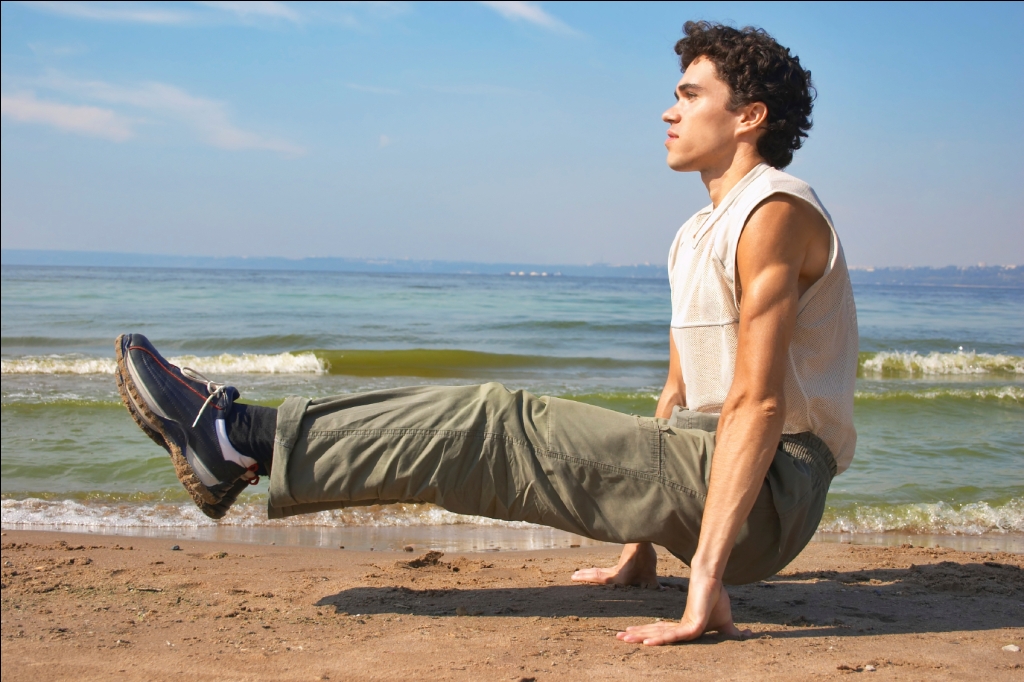What do gymnasts and Navy Seals have in common? If you said they are both in phenomenal shape, you would be correct. But, how do they get so fit? Yes, years of training might have something to do with it. However, it’s also true that the majority of their training is done using body weight exercises. And, if bodyweight training is good enough for Olympians and elite warriors, maybe you should give it a go?
Now, you might be questioning the effectiveness of body weight exercises for building serious muscle or strength. Heck, you might even be wondering how you can shed a few pounds without your hitting the road for a run. Well, you could just take my word for it. Or, if that doesn’t meet your standard of proof, let’s explore exercise physiology for further evidence.
The Science of Bodyweight Training
Your muscles and movements are connected. When you try to apply force, your nervous system tells your muscles to fire. All the elements of the body spring into action to follow your orders. This movement sequence is known as the kinetic chain. But, there are two very different ways to train your body and kinetic chain.
1.) If you were to perform the bench press, leg curl or lateral pull down, you would be doing an open chain exercise. Think of it this way; your hands and/or feet are not anchored to an immovable object. You are moving an object towards or away from your body. The movement takes place around one joint; isolating one muscle group.
2.) Conversely, bodyweight exercises, like the lunge or push-up, are of the closed chain exercise variety. Because your hands or feet are attached to an immovable object –the floor – you are moving your body to or from a fixed object. This type of movement involves multiple joints and muscle groups.
The Breakdown
Now, to translate the biomechanical mumbo-jumbo into meaningful information: bodyweight exercises are awesome! Okay, in a little more detail, they are highly effective and efficient for improving muscular and neurological activation. Meaning you can become stronger and more coordinated. Learning to move your body through space is the definition of functional training. [pullquote_left]Your workouts are BYOB – body, not beverage.[/pullquote_left] It’s the kind of exercise that improves performance in everyday life and sports. Since you are training more than one muscle group and joint, expect better results in less time. Better still, because there is no equipment necessary, you can train anywhere, anytime. Your workouts are BYOB – body, not beverage.
Building a Bodyweight Workout
Bodyweight training is great for everyone, regardless of exercise ability or experience. You can create a bodyweight only plan or supplement your current training plan with bodyweight exercise for a well-rounded approach to fitness. Start by perfecting the beginner movements.
Beginner – exercise position, plank, push-up, squat, lunge, inverted row, jumping jack
Intermediate – walk-out, squat hold, jump squat, pull-up, triceps dip, step-up, mountain climber
Advanced – wide grip pull-up, dive bomber push-up, jump lunge, split squat, burpee
Expert – burpee to pull-up, handstand push-up, single arm push-up or inverted row, Olympic rings or TRX for push-ups, dips, or pull-ups
Then, try to complete an entire bodyweight workout.
[box_light]
The Workout
Details: 5 Rounds, 30 seconds each exercise, Rest up to 60 seconds between rounds
1. Push-up
2. Squat
3. Mountain climber
4. Dive bomber push-up
5. Alternate lunge
6. Burpee
[/box_light]
Do you use bodyweight exercises in your training plan? Which one do you like best – OR – What’s stopping you from trying?
[box_light]This has been a guest post from Joe Vennare, co-founder of The Hybrid Athlete. Check out their website and follow Joe on Twitter for more health and fitness information. [/box_light]
